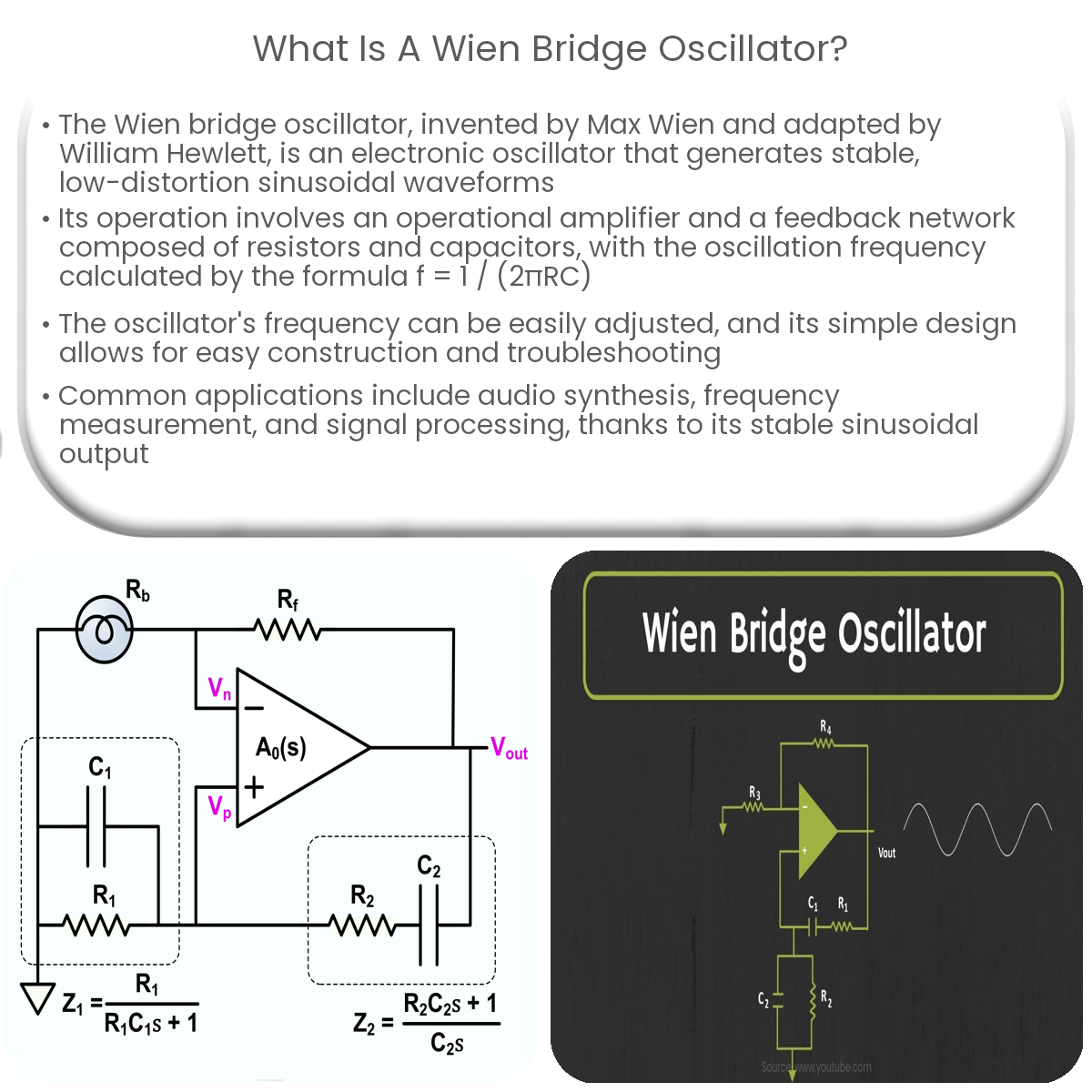A Wien bridge oscillator is an electronic oscillator that generates stable, low-distortion sinusoidal waveforms, used in audio synthesis, frequency measurement, and signal processing.
Introduction to Wien Bridge Oscillator
A Wien bridge oscillator is a type of electronic oscillator that generates stable sinusoidal waveforms. It was invented by Max Wien in 1891 and later adapted for use as an oscillator by William Hewlett in the 1930s. It uses a combination of resistors and capacitors to create a frequency-selective feedback network, which allows for precise control over the output frequency.
Wien Bridge Oscillator Circuit
The Wien bridge oscillator consists of an operational amplifier (op-amp) and a frequency-determining feedback network composed of resistors and capacitors. The feedback network has two branches: one branch contains a series RC circuit, while the other branch contains a parallel RC circuit. The output from the op-amp is fed back to its non-inverting input through the feedback network.
The frequency of oscillation for the Wien bridge oscillator is determined by the values of the resistors and capacitors in the feedback network. The oscillation frequency can be calculated using the following formula:
f = 1 / (2πRC)
Where f is the frequency of oscillation, R is the resistance, and C is the capacitance.
Advantages of Wien Bridge Oscillator
-
Stable and low-distortion sinusoidal output: The Wien bridge oscillator is known for generating stable and low-distortion sinusoidal waveforms, making it ideal for audio frequency applications.
-
Frequency control: The oscillation frequency can be easily adjusted by changing the values of the resistors or capacitors in the feedback network.
-
Simple design: The circuit design of the Wien bridge oscillator is relatively simple, consisting of an op-amp and a few passive components, which makes it easy to build and troubleshoot.
Applications of Wien Bridge Oscillator
Wien bridge oscillators are commonly used in various applications, including:
-
Audio synthesis: Due to its stable and low-distortion sinusoidal output, the Wien bridge oscillator is commonly used in audio equipment, such as synthesizers, tone generators, and audio test equipment.
-
Frequency measurement: The Wien bridge oscillator can be used as a reference signal source for measuring frequencies or testing the performance of other electronic devices.
-
Signal processing: In some signal processing applications, the Wien bridge oscillator is used to generate a precise sinusoidal waveform for modulation, demodulation, or filtering purposes.


